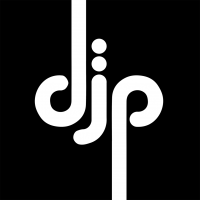Leaderboard
Popular Content
Showing content with the highest reputation on 06/20/2016 in all areas
-
PaRappa the Rapper: "Believe" EP (RECRUITING)
Cole Train and 2 others reacted to DaleNorth for a topic
I'll do Funny Love -- it's one of my favorite songs in the universe.3 points -
PaRappa the Rapper: "Believe" EP (RECRUITING)
Cole Train and one other reacted to DiggiDis for a topic
*lurks*2 points -
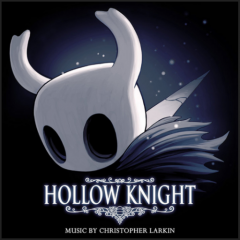
OC ReMixes In the Wild
Ramaniscence reacted to LuckyXIII for a topic
Aloha - been awhile since I've posted, but I thought y'all might be interested in this. I'm in the Navy and work for an organization whose mission is to recover the remains of missing/war dead from WWII up to the Cold War - The Defense POW/MIA Accounting Agency. I've been at it for almost three years now, but only in the last few months I've taken on the responsibility in our Public Affairs shop to produce short videos showcasing the stories of family members whose loved ones never made it back (in one way or another). In the videos I've utilized some of the mixes from this site. I've been a member since 2002(!) and I think the majority of my music library is still OCRemixes. Anyway, I've always loved the community and artistry behind it and what it puts out. So, if anyone's interested, here they are - OCRemixes being used in the wild - - - I've reviewed the Terms of Use and I hope I'm giving the proper credit in the YouTube descriptions - if I'm not, please let me know.1 point -

Recreating SNES Music in FL Studio? (Edison specifically)
timaeus222 reacted to zircon for a topic
Thanks for the kind words on Super Audio Cart! Yes, the key to creating good SNES style samples is primarily focused around very tightly editing + looping one-note instrument samples. You must keep the size very small. But before you even render that sample, you need to make sure it is set to MONO with a max sample rate of 32khz. (Or if you want to keep the samplerate at 44khz for practical reasons, use a very sharp lowpass to cut off everything above 16khz.) If you are using a bass sample or similar you may want to go down even lower to 22 or 11khz. Once you have your downsampled audio, you will want to do authentic bit rate reduction (BRR). You can search on Google for various BRR encoding tools out there. Most require you to do some stuff in the Windows command line to actually encode the samples. Essentially you want to encode the samples to SNES loadable format and immediately decode back to WAV, which gives you properly compressed/filtered audio. Lastly, using a looping app like EndlessWAV (free) you can very tightly edit, trim, and loop the sample until the final result is - at most - 20 kilobytes or less.1 point -
hey i'd be interested.. maybe a collab with someone. is there a deadline for claiming tracks?1 point
-
There should be an album proposal in the appropriate inbox somewhere with all the details, but the plan wasn't to release the full album on June 23rd since there's quite a few tracks in progress that we'd like to see completed. We had some ideas for a teaser to announce the upcoming album tho I'll check things with Black_Doom to make sure, the project isn't dead but we just need to pick a new date for it (we already brainstormed some ideas).1 point
-
Just curious as to status on this... June 23rd is, well.... quite soon!1 point
-
Need ears for 8 Bit / Punk project (drums)
timaeus222 reacted to Wadokoha for a topic
Hi Timaeus you were right! I went to the studio to use live monitors for a loud sound and I settled for the kick of track 2, snare and toms of track 1 and cymbals of track 3.. Thank you again for your precious help! I hope to come back soon for bass1 point -
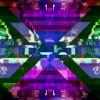
rRPC 2016 - The ReMix Role-Playing Competition 2016
FenixDown reacted to alfredofreak for a topic
Subbed! FYI, I managed to find a MIDI for the Breath of Fire track on VGMusic. It's listed as Drogan. There's no way I would have had anything close to what I submitted without it!1 point -

rRPC 2016 - The ReMix Role-Playing Competition 2016
FenixDown reacted to alfredofreak for a topic
I keep forgetting about this competition. I'm sitting down to start my entry right now. We'll see how far I get but I will definitely have something submitted. Probably gonna be super abstract.1 point -
rRPC 2016 - The ReMix Role-Playing Competition 2016
FenixDown reacted to Ghetto Lee Lewis for a topic
Their names were Mara and Nara in the version I played. Dragon Quest is always so inconsistent with their character names. Anyway, I just submitted. Thanks for the extension. I've been so frigging busy lately I couldn't finish anything last week.1 point -
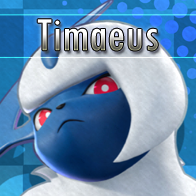
Framerate limit
djpretzel reacted to timaeus222 for a topic
In our day and age, we have access to some pretty hefty storage. I mean, look at this 128 GB flash drive for $5.59 (sure looks bleh, but man, that's almost as much storage as one of my external HDD's!) . I don't know how much that price got you in thumbdrive storage size in the times before I was born, but definitely much less than that! (Silly me, I still use an 8 GB thumbdrive for school.) I really don't think storage is an issue, so sure, the particular MP3 for the example I showed you (1:33 long) was 2.48 MB at 224 kbps and 1.42 MB at 128 kbps, but the main benefit is that a 192+ kbps bitrate minimizes compression artifacts across most genres of music (whether it has a lot of crisp synthesized elements or poorly-recorded mono distorted electric guitar), and keeps a consistent bar of quality when it comes to the "age" of ReMix submissions. I think it's a good thing that we at OCR favor higher bitrates over lower bitrates.1 point -
I love this post. I absolutely love this post. It proves a certain point; for every individual convinced he/she has golden ears and can hear the difference between 1024Khz and 4096Khz and 128-bit audio vs. 2048-bit audio (intentionally ridiculous numbers here, folks!), there's someone questioning the use of bandwidth and (incorrectly) invoking something like Nyquist to argue that we've gone past the limits of human hearing... @Grunkk, my brubba.... 128Kbps is a bitrate, not a sampling frequency/depth. You can have a 128Kbps "quality" stream of 16-bit, 22khz mono audio. You can have a 320Kbps stream of the same. You can also have a 64Kbps stream of 24-bit, 96Khz stereo... I'm not gonna bore you with the details, here, but in simple terms: the MP3 bitrate dictates the lossiness of the compression, whereas the bit depth & sampling frequency dictate the fidelity of the source audio. The first is the lossiness of the digital compression being applied to the captured data, the second is the "lossiness" (more like "quantization") inherent in the conversion from the analog realm to the digital. Metaphor: MP3 bitrate is JPEG lossiness on a scale of 0-100%. where as audio bit depth & sampling frequency are the resolution and color depth of the lossless source image being compressed. You can have a JPEG 100% quality image that's 100x100 pixels, and you have have JPEG 20% quality image that's 1000x1000 pixels... 128Kbps can be noticeably lossy, even to the layperson, depending on the nature of the audio in question... hence our decision to increase to either 192Kbps or VBR1, with a Nyquist-friendly and industry-standard 16-bit + 44.1khz stereo source. If all of this seems overwhelming, I guess you'll just have to trust us: we've landed on a standard that 99.9% of people couldn't reliably pass an A/B Coke/Pepsi taste test on when comparing to lossless, including Neil Young and Brendan Becker, yet which doesn't unnecessarily wander into the realm of 320Kbps, 24-bit, 96khz diminishing returns...1 point
-
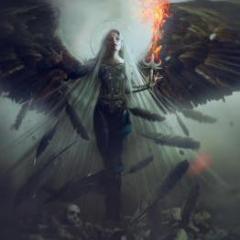
Framerate limit
DarkeSword reacted to AngelCityOutlaw for a topic
I prefer my music at 24fps, anyway. It's more "cinematic" that way *adjusts hipster glasses*1 point -
It suddenly occurred to me, some of you history pedants might enjoy watching lindybeige's videos. He's made a few about roleplaying games.1 point
-

Overwatch
eggsngaming reacted to AngelCityOutlaw for a topic
I think I've gotten decent at countering most of the annoying characters. Hate Mei, though.1 point -
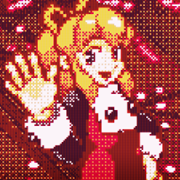
HELP NEEDED! ReMix Tagging Project! (Genres, Moods, Instrumentation, etc.)
Chromarin reacted to DarkeSword for a topic
Yes.1 point -

What am I missing?
Slimy reacted to Nabeel Ansari for a topic
Making your own sound is okay, but a good sound is never going to fix your writing. Music is about ideas. Writing music is about presenting those ideas, developing them, showing them in new lights, and referencing them (among other things I'm forgetting). The most standard musical "main idea" is called the melody. The melody has something to say in the music, and it's closely related to chords. The chords define how the melody functions (its core essence) and the melody itself is the representation (or if you'd like, the execution) of that core essence. I notice a lot of people kinda just lean on one of them sometimes, especially people getting their chops from OCR. They write the melody, then kinda just add chords that sound like they fit underneath, or, they have some chord progression and then just slap in some notes in a lead synth to make their melody. This doesn't ever really work because it doesn't really wield an understanding of why chords and melodies are so closely related. A melody has a start and an end. Depending on how out your style is, your melody may or may not resolve. It may move across different tonalities or it could just be something really simple and catchy. Sometimes, melodies are very transparent and non-catchy (and that's fine, and if anyone tells you otherwise you smack them upside the head) when the musical presentation is supposed to be about color (harmony/texture) and not statement (main idea presentation). Sometimes you don't have melodies at all, instead your music is about presenting and manipulating color. Even though melodies are hard to write, color music (most popular in the impressionist era) is actually harder to write, since it's kind of abstract. In electronic music, it's a little easier, since you're forgiven for lots of repetition (which you can use to build up your tracks more linearly instead of moving around organically). You should listen to music, especially symphonies. The old guys were masters of using music as a means of communicating ideas. They had their melodies (themes/motifs), then gave them to different instruments, changed their keys, swapped major/minor, chopped them up, etc. All of these things are valid ways of manipulating and presenting ideas. When you're writing music, you have to have "something". There has to be something where you say "I want this to be developed". It can be a cool synth arp, or a wacky chord sample, or it can be a full melody. You have to build your track around presenting whatever that is. You need to foreshadow it, lead into it, show it, then hide it, lead out of it, bring it back in a different way (or the same way). Don't do all that stuff in that order all the time, the point is there's all these things you can do with one idea, so the more you do, the longer your piece/track gets and the more dynamic it is. Then start piecing together ideas and having overarching progressions. is a perfect example, since this band does this thing a lot where they build a track out of 3 or 4 main ideas. At 1:36, the entire direction (rhythmically and harmonically) of the track shifts someplace else. The mood and part-writing style changes considerably. It's a "new idea", it's "we're done with that, here's something new". Again, they do this at 2:15, and I would argue the second idea foreshadows the third one with the way its harmony works. That's up for debate, but the point is the song moves to different places. That's progression! In each of the three sections, they do a lot with their main ideas (having melodies, b-section melodies, changing texture, changing chords), but the sections also flow together as one big unit. This is just a snippet of advice. Learning how to write takes lots of practice, study, and mentors. I can't fix you in a forum post, but I can help change your mindset a little. My recommendation is learning more music theory. You need to get past chords and rhythms, that stuff is where people usually stop and it's not really what music theory is about at all, and thus it pollutes the general populace understanding about music theory and people think it's too basic or rigid to have anything general to say about music.1 point

